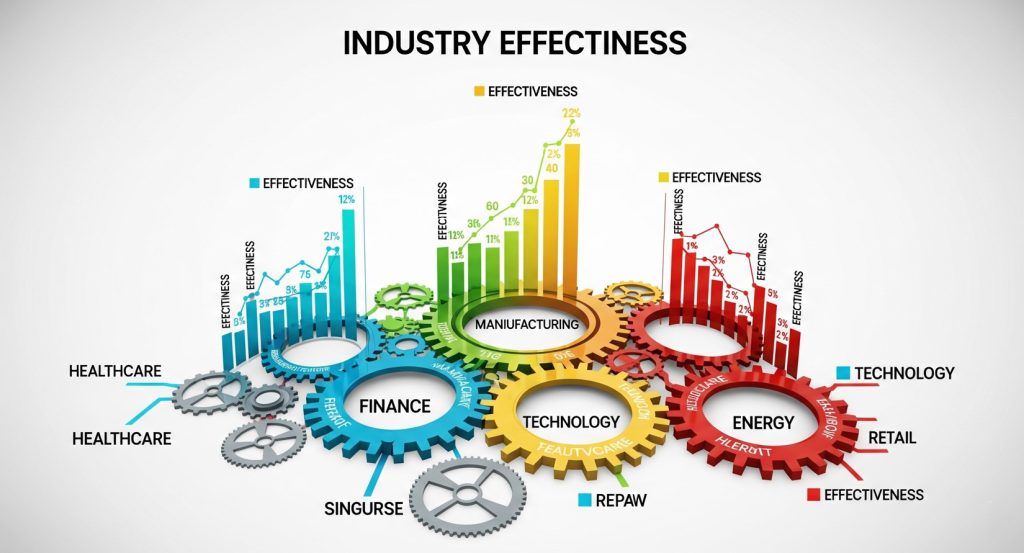For generations, television advertising has assumed the role of marketing’s big kahuna, but its value is being questioned more and more as digital channels expand and people’s viewing habits change. Although streaming services and social media networks have been grabbing the headlines, TV ads are still a major spend for brands around the world.
Does TV still work? – Looking at TV advertising effectiveness
This white paper explores the effectiveness of TV advertising, discussing the key questions around TV advertising, including where does it sit in the marketing media mix, and it highlights TV’s strengths, its effectiveness and how it fits with the evolving TV landscape.
The State of Television Advertising Today
Television ads bring in nearly $70 billion per year in the United States, proving that it’s still a critical part of advertising. However, this number disguises dramatic shifts in the way viewers are watching TV shows.
Linear TV viewership has been taking a steady slide, particularly in the younger age groups. Adults 18–34 now watch 1.5 hours of live television a day on average, down from 2.8 hours five years ago. This is a sea change for advertisers that have long depended on TV for mass reach.
Television advertising still has unique advantages — which digital rivals haven’t been able to fully duplicate — despite falling viewership. The medium of film’s way of merging visual narrative, emotional resonance, and scale makes it an unbeatable brand-building platform.
Measuring Television Advertising Effectiveness
Brand Awareness and Recognition
Television advertising is very good at building a brand with a large audience. The interplay of sound, picture, and story provides moments you won’t soon forget—until the next ad comes on.
Studies repeatedly reveal TV ads deliver 60–80% greater brand recall than digital-only campaigns. This increased awareness is reflected in the consideration that consumers accord (for those high involvement products such as new car, insurance, financial services etc.) while making purchase decision.
Sales Impact and ROI
You need increasingly sophisticated attribution models to figure out what television exposure is actually driving directly to sales. But, the numbers show that on average TV advertising returns $3–5 in sales for every dollar spent (although this can vary widely by industry and how well the ad is).
The sales response can often be longer lasting than just an immediate response. If you have TV campaigns, that actually creates a “halo effect” which uplifts all your other marketing channels. Branded search queries increase 20–30% with the airing of TV commercials, so TV drives online research and buying habits.
Long-term Brand Building
The real power of television advertising is with long-term brand building as opposed to short-term direct response. The medium allows for an emotional storytelling that a brand personality, values and differentiation cannot be communicated in a product- or feature-focused world of shorter digital content.
When brands stay on TV, they show more resistance to price pressures and enjoy higher customer loyalty. This upper level positioning could also rationalize increased advertising rates due to higher profit margins and higher customer lifetime value.
Television vs. Digital Advertising Effectiveness

Reach and Frequency
TV advertising still provides the best reach for broad demographic targets. A prime-time commercial can easily be viewed by millions of people at once, leading to shared cultural moments rarely experienced through advertising online or in print.
Digital advertising has better targeting and can bring in individual segments more personalized messages. But that precision has a trade-off: targeting so specific that even the most tailored campaigns can only deliver to relatively tiny audiences.
Engagement and Attention
Viewing TV usually entails more attention compared to when consuming digital content. TV commercials will garner more attention, especially during live events or appointment viewing programming.
Ad blockers, banner blindness, and those short attention spans are pitfalls that digital channels can hardly overcome. To the extent that website advertising allows for user interactivity and immediacy of response that other media, such as print or television advertising, do not, there may be own effects of immediacy and user involvement that mitigate the effects of advertising clutter.
Cost Efficiency
The minimum investment is very high for TV advertising, so it’s mostly for big advertisers. The production of high-quality TV commercials typically exceeds $100,000, and media placement can run in the millions for national ad campaigns.
Compared to traditional advertising, it is easier for small companies to participate in digital advertising and adjust budgets. A small business can start a very successful digital campaign on a budget of less than $1,000, allowing trial and error for quick learning.
Read To Make Television Ads More Effective? More Thoughts from the Industry.
Creative Quality and Relevance
Creative execution is paramount to the effectiveness of these television spots. Well, ads that are memorable, funny or touching do hugely better than a generic or crappy one.
Most successful TV ads have some things in common—strong brand positioning, a compelling story, the right emotional tone, and/or some catchy or memorable visual or audio element. These creative elements can be the difference between a campaign that delivers ROI and one that doesn’t move needles for the business.
Audience Targeting and Timing
Thanks to advancements in advanced TV advertising platforms, advertisers can now target demographics, interests, and behaviors more clearly than ever. This growth also helps to compensate for traditional TV’s historic bluntness in audience targeting.
Timing still matters for TV commercials to be effective. Drive greater engagement and recall by promoting during relevant programming or events. When the audiences receive consistent messages across content and ad, the more the campaign will work better.
Integration with Other Channels
Television works best as part of an overall marketing effort. Integrated campaigns on TV, digital and traditional media, are greater than the sum of their parts.
Cross-channel attribution – TV advertising frequently starts customer journeys that are concluded online. This interrelated dynamic makes channel-centric evaluation less insightful than campaign-level evaluation.
The Evolution of Television Advertising
Connected TV and Streaming Platforms
TV’s visual impact meets digital’s precise targeting. CTV/OTT streaming services are disrupting TV advertising, combining the impact of TV with the precision of digital. These platforms allow advertisers to target cord-cutters and still deliver the storytelling of television.
Streaming services provide detailed information about who is watching, which the traditional TV universe lacks, allowing more sophisticated audience targeting and a better sense of how a show is performing.
Addressable TV Advertising
Addressable TV technology enables individual homes to receive different adverts while watching the same programmed, offering a significant leap in targeting.
Early results from addressable TV campaigns indicate conversion rates that are 2–3x higher than what we observe in traditional TV advertising, and better targeting could be contributing to much of that.
Interactive TV Features
New interactive TV features allow viewers to interact directly with advertisements using their remote control or mobile device.
Interactive elements include ‘Allow me to buy it,’ information request and social media click-through generating actionable responses for cleaner ROI attribution and optimization.
Industry-Specific Effectiveness

Retail and E-commerce
Especially for promotional periods there are large numbers of visitors to retail websites and shops as a result of a TV spot.
When you pair the broad reach of TV advertising with the conversion tracking of e-commerce, you get some powerful attribution models that show very strong ROI.
Financial Services
Banks, insurance firms and investment banks are currently still spending large sums of money on TV ads because it brought with the ability to establish trust.
Television’s long format is perfect for intricate financial products as they can be explained and demonstrated thoroughly.
Automotive Industry
Car makers are among the most tenacious backers of TV advertising.
Television advertising which demonstrates the features, performance and lifestyle characters of the vehicle fits ideally with the types of interests targeted for automotive marketing.
Measuring and Optimizing Television Advertising

Attribution Models and Analytics
Nowadays, attribution models are developed to reflect the multifaceted influence of TVCs on consumer behavior.
The latest generation of analytics platforms now combines TV exposure data with tracking of digital behaviors, providing more comprehensive views of customer journeys.
A/B Testing and Optimization
Television advertising hasn’t had digital’s quick testing capabilities, but new technology allows more advanced experimentation.
Simply optimizing based on real-time performance is how TV ad effectiveness is maximized.
Future Outlook and Recommendations
Effectiveness in TV advertising will probably be contingent on adapting well to evolving viewing habits and display technologies.
The medium’s next chapter is about driving up personalization, proving out measurement, and making it integrated into all (digital) customer experiences.
Maximizing Television Advertising Impact
TV advertising is still impactful when used wisely and analyzed holistically. Its special mix of reach, once there, and brand-building power remains to deliver in sectors as varied as travel and entertainment.
In order to be successful, efforts need to be finely targeted to the audiences, content must be interesting, creative and integrated to larger marketing efforts.
The best strategy marries to the strengths of TV the precision of digital, creating campaigns that both lift awareness and drive consideration as well as demonstrable effect to the advertiser’s business.
As you evaluate whether television advertising is effective in the digital age, it’s equally important to consider why creative advertising campaigns are vital to your brand’s success in capturing and retaining audience attention.





